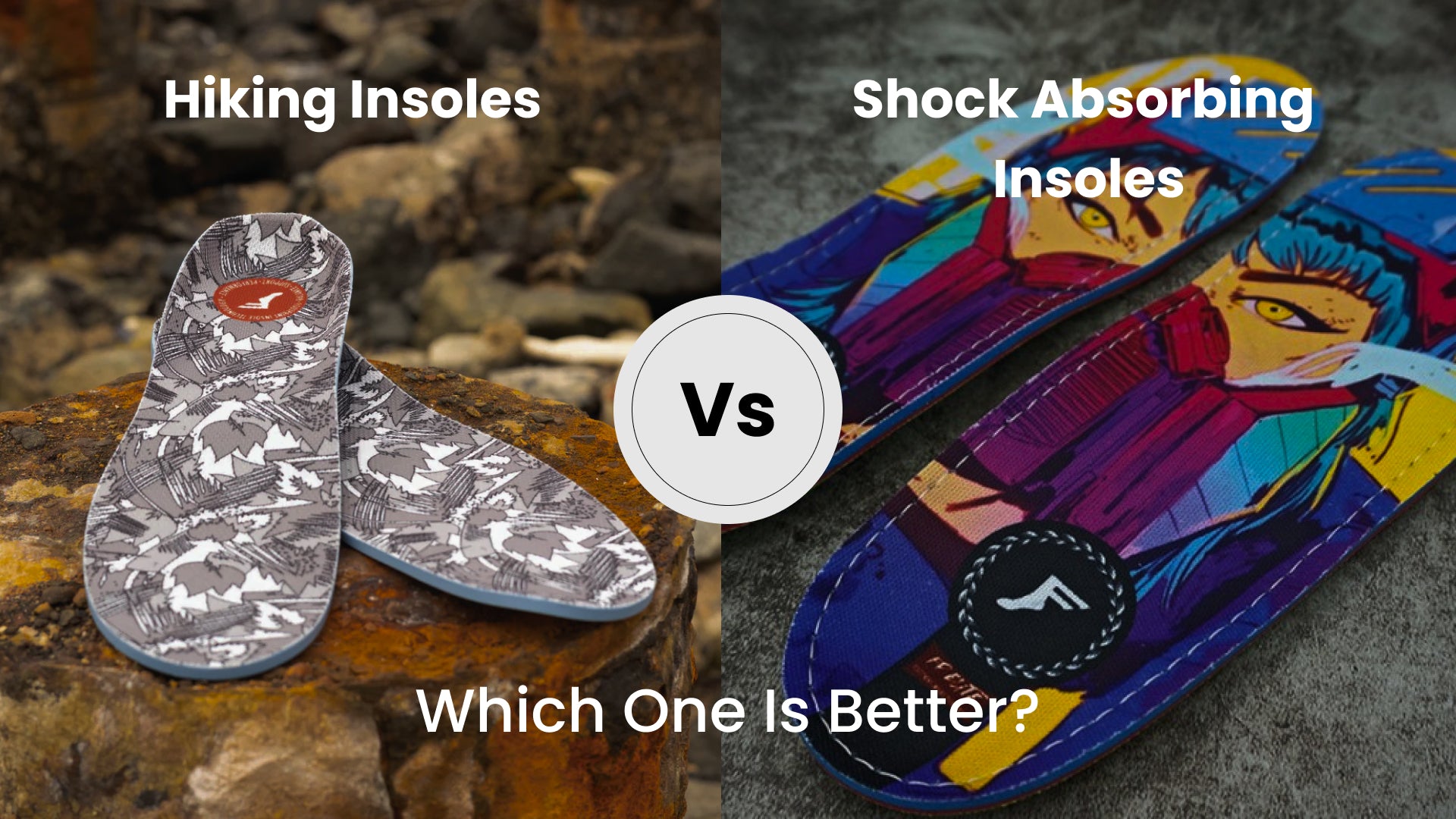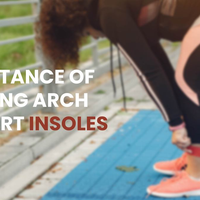Hiking Insoles vs. Shock Absorbing Insoles: Which One Is Best?

Let's face it, when you're out on the trail, every step counts. Your feet need support, cushioning, and comfort. Two popular options to enhance your hiking experience are hiking insoles and shock absorbing insoles. But which one should you choose? This guide will walk you through the features, benefits, and key differences between the two types of insoles, so you can make the best decision for your next adventure.
What Are Hiking Insoles?
Hiking insoles are specially designed to cater to the unique needs of hikers. They aim to provide the perfect balance of support, comfort, and durability for those tackling rough terrains and long distances. Let's dig a little deeper into the features and benefits of hiking insoles.

Features of Hiking Insoles
Hiking insoles boast a number of features that set them apart:
- Arch Support: Hiking insoles often have higher arch support compared to regular insoles, ensuring proper alignment of your feet and better overall posture.
- Cushioning: These insoles are crafted with advanced cushioning technology, absorbing the shock of each step and reducing impact on your feet and legs.
- Moisture Management: Hiking insoles are usually made with breathable materials that wick away moisture, keeping your feet dry and comfortable.
- Improved Comfort: The combination of support and cushioning leads to a more comfortable hike, minimizing foot fatigue.
- Reduced Injury Risk: Proper support and cushioning can help prevent common hiking injuries like plantar fasciitis and shin splints.
- Enhanced Performance: When your feet are comfortable and supported, you can hike longer distances with greater confidence.
What Are Shock Absorbing Insoles?
Shock absorbing insoles are designed to do exactly what their name suggests: absorb the shock from your steps. They're often used by athletes or people who spend a lot of time on their feet. Let's take a closer look at what makes these insoles special.

Features of Shock Absorbing Insoles
- Advanced Cushioning: These insoles excel at absorbing impact, making them ideal for people with high-impact lifestyles.
- Lightweight Materials: Shock absorbing insoles are usually made with lightweight, yet durable, materials that don't add extra bulk to your shoes.
- Customizable Fit: Many shock absorbing insoles come with options for customizing the fit, ensuring they work for your specific foot shape and size.
Benefits of Shock Absorbing Insoles
- Less Joint Strain: By minimizing impact on your feet, knees, and hips, shock absorbing insoles can help reduce strain on your joints.
- Enhanced Recovery: Athletes may find that these insoles help speed up recovery time by reducing the impact of each step.
- Versatile Use: While they work well for athletes, shock absorbing insoles can also benefit those who spend long hours standing or walking.
Comparing Hiking and Shock Absorbing Insoles
Let's break down the key differences between these two types of insoles to help you decide which one suits your needs best.
Cushioning and Support
- Hiking Insoles: Offer a balance of support and cushioning, focusing on proper alignment and foot comfort during long hikes.
- Shock Absorbing Insoles: Prioritize impact absorption and reducing strain on joints, making them great for high-impact activities.
Durability and Material Quality
- Hiking Insoles: Built for durability and rough terrains, these insoles use high-quality materials that stand the test of time.
- Shock Absorbing Insoles: Often made with lightweight yet durable materials, suitable for athletes and active individuals.
Fit and Comfort
- Hiking Insoles: Typically provide a snug, supportive fit with features like arch support and moisture management.
- Shock Absorbing Insoles: Can offer customizable fit options, focusing on reducing impact and providing comfort.
Price and Availability
- Hiking Insoles: May be priced slightly higher due to their specialized features, but their availability is widespread in outdoor stores.
- Shock Absorbing Insoles: Often competitively priced, with many options available at sporting goods stores.
Application and Usability
- Hiking Insoles: Designed specifically for hikers and outdoor enthusiasts, excelling in performance on rugged terrain.
- Shock Absorbing Insoles: Suitable for athletes, active individuals, and those who want to reduce joint strain.
Choosing the Best Insole for You
Ultimately, the decision between hiking insoles and shock absorbing insoles comes down to your personal needs and preferences. Here are some key points to consider when making your choice:
Your Personal Hiking Needs
- If you're a dedicated hiker, you might prioritize the support and durability that hiking insoles provide.
- If you're more concerned about impact absorption and reducing joint strain, shock absorbing insoles may be the better choice.
Balancing Performance and Budget
- Consider your budget and how much you're willing to spend on insoles.
- Balance performance with cost-effectiveness to find the best value for your needs.
Where to Find Quality Insoles
- Look for reputable brands known for quality and performance.
- Check online reviews and recommendations from other hikers or athletes to find the best options.
Conclusion: The Best Insole for Your Adventure
In the end, choosing between hiking insoles and shock absorbing insoles depends on your individual needs and preferences. Both types have their unique strengths, so it's all about what works best for you. Take into account your hiking style, personal comfort, and budget when making your decision. Whichever insole you choose, your feet will thank you on your next outdoor adventure!
FAQs About Hiking Insoles vs Shock Absorbing Insoles
1: Can I use hiking insoles in my everyday shoes?
Absolutely! Many hikers use their hiking insoles in everyday shoes for added comfort and support.
2: Are shock absorbing insoles good for people with flat feet?
Yes, they can help reduce impact and joint strain, which may benefit those with flat feet.
3: How often should I replace my insoles?
Typically, insoles should be replaced every 6 to 12 months, depending on usage and wear.
4: Can I customize the fit of hiking or shock absorbing insoles?
Yes, many brands offer customizable insoles that can be trimmed or molded to fit your shoes.
5: Do I need to break in new insoles before a hike?
It's a good idea to wear new insoles around the house or on short walks before taking them on a long hike. This helps you get used to the feel and ensures they're comfortable.




